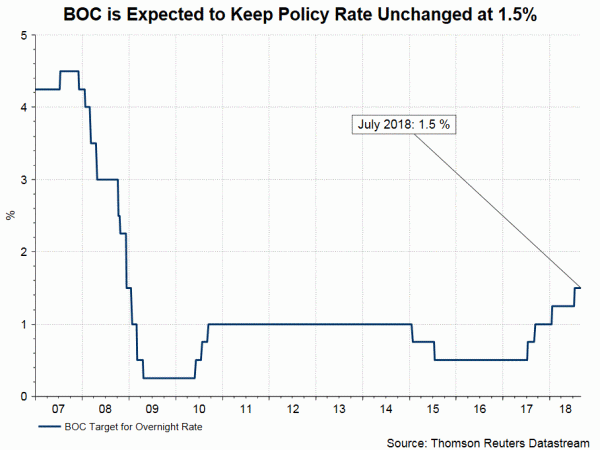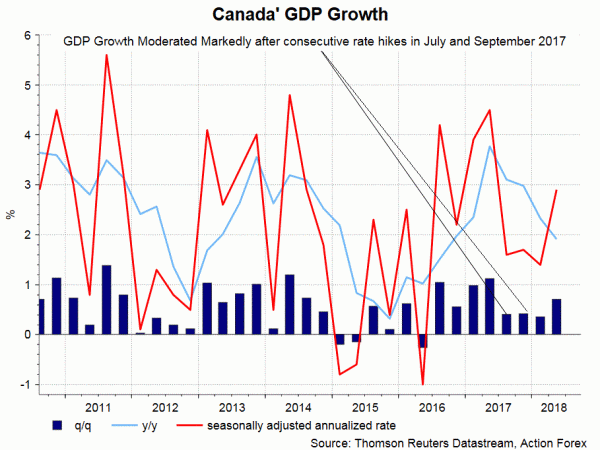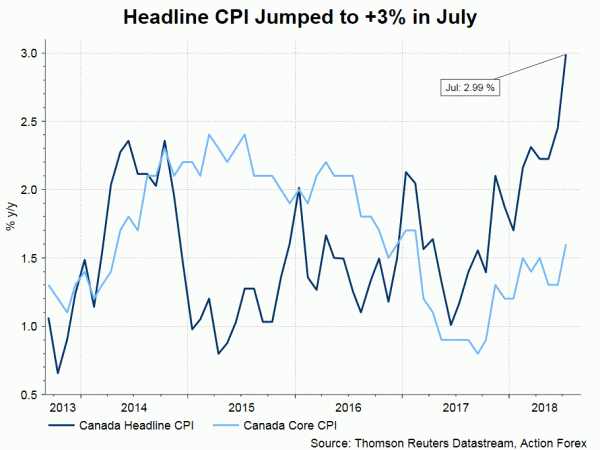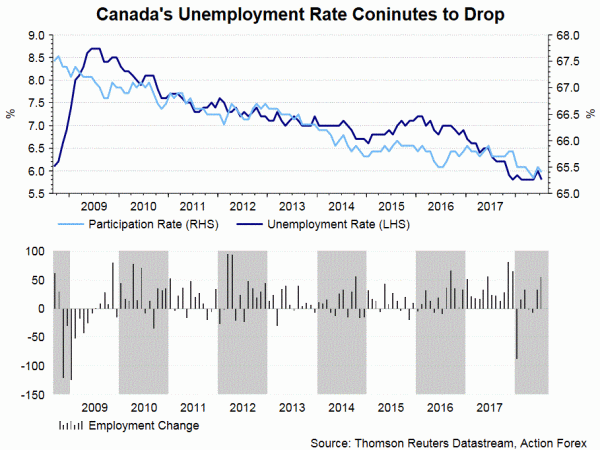Recent upbeat macroeconomic data has lifted speculations for a BOC rate hike in September. Yet, we do not expect the developments since the last meeting should change the central bank’s gradual normalization policy. Policymakers should bear in mind the lesson of a back-to-back rate hike (July and September) last year – a stronger than expected moderation in economic growth and inflation. Meanwhile, as the outcome of NAFTA negotiations appears highly uncertain, the central bank would prefer to take a more cautious approach on the monetary policy decisions. As such, a rate hike in October, rather than in September, is more justified.
GDP expanded +2.9% q/q (annualized) in 2Q18, up from +1.4% a quarter ago. While this has missed market expectations of +3%, it came in above BOC’s estimate of +2.8%. The details suggest resilient domestic demand, accompanied by surging exports. Indeed, trade for the first time this year contributed to economic growth. Growth was +5.2% in the good-producing sector, compared with +2.7% in the service-producing sector.
Headline inflation accelerated to +3% y/y in July, beat consensus of, and July’s, +2.5%. Despite the rise to almost a 7-year high, much of it was driven by temporary factors- higher gasoline price and air transportation cost.
The various core measures suggested underlying inflation has stayed around +2%. BOC core CPI climbed higher to +1.6% y/y, from +1.3% in June, while the median and trim CPI readings were at +2% (June: +2%) and +2.1% (June: +2.1%), respectively. While inflation has progressed on track, there is no overheating that requires acceleration of policy tightening.
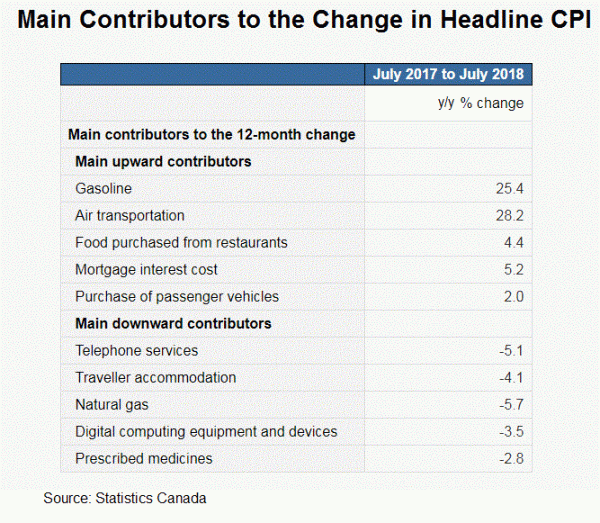 The job market continues to improve, with the unemployment rate falling to 5.8% in July, from 6% a month ago. However, the increase in payrolls mainly came from part-time jobs, which added +82K in July (June +22.7K), while full-time jobs actually contracted -28K (June: +9.1K). Average weekly earnings climbed higher to +2.8% in June, from a downwardly revised +2.75% in the prior month. Overall, employment situation is resilient, remaining on track but not calling for faster rate hike.
The job market continues to improve, with the unemployment rate falling to 5.8% in July, from 6% a month ago. However, the increase in payrolls mainly came from part-time jobs, which added +82K in July (June +22.7K), while full-time jobs actually contracted -28K (June: +9.1K). Average weekly earnings climbed higher to +2.8% in June, from a downwardly revised +2.75% in the prior month. Overall, employment situation is resilient, remaining on track but not calling for faster rate hike.
On trade issues, the US and Canada failed to strike a deal last Friday with talks expected to resume on Wednesday. The US and Mexico announced in late-August that they have reached a bilateral trade deal. It is believed that Trump attempts to force Canada to join their deal, thus converting the bilateral deal to a trilateral one and replacing NAFTA. As we mentioned in a previous report, the most contentious issues between the US and Canada are dairy and the dispute settlement mechanism (Chapter 19). We do not expect Canada would easily surrender in these areas and anticipate a long way to go for the trade deal negotiations.
Back in 2017, BOC raised the policy rate for the first time in 7 years, by +25 bps, in July. This was followed by another surprising rate hike in September, leading to faster-than-expected moderation in growth. Over the past months, economic developments have progressed in line with BOC’s expectations. Meanwhile, the central bank has cautioned over NAFTA uncertainty. We expect BOC would be more cautious this time and stick to the gradual normalization approach.




